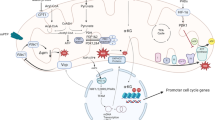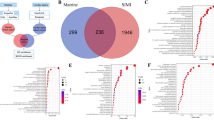Summary
The purpose of this study was to investigate the potential cardioprotection roles of Rapamycin in anoxia/reoxygenation (A/R) injury of cardiomyocytes through inducing autophagy, and the involvement of PI3k/Akt pathway. We employed simulated A/R of neonatal rat ventricular myocytes (NRVM) as an in vitro model of ischemial/reperfusion (I/R) injury to the heart. NRVM were pretreated with four different concentrations of Rapamycin (20, 50, 100, 150 μmol/L), and pretreated with 10 mmol/L 3-methyladenine (3MA) for inhibiting autophagy during A/R. Then, Western blot analysis was used to examine variation in the expression of LC3-II, LC3-I, Bim, caspase-3, p-PI3KI, PI3KI, p-Akt and Akt. In our model, Rapamycin had a preferential action on autophagy, increasing the expression of LC3-II/LC3-I, whereas decreasing the expression of Bim and caspase-3. Moreover, our results also demonstrated that Rapamycin inhibited the activation of p-PI3KI and enhanced the activation of p-Akt. It is concluded that Rapamycin has a cardioprotection effect by inducing autophagy in a concentration-dependent manner against apopotosis through PI3K/Akt signaling pathway during A/R in NRVM.
Similar content being viewed by others
References
Murray CJ, Lopez AD. Alternate projections of mortality and disability by cause 1990–2020: global burden of disease study. Lancet, 1997,349(9064):1498–1504
Gottlieb RA, Mentzer RJ. Autophagy: an affair of the heart. Heart Fail Rev, 2013,18(5):575–584.
Sabe AA, Elmadhun NY, Dalal RS, et al. Resveratrol regulates autophagy signaling in chronically ischemic myocardium. J Thorac Cardiovasc Surg, 2014,147(2):792–798, 798–799
Choi AM, Ryter SW, Levine B. Autophagy in human health and disease. N Engl J Med, 2013,368(7):1845–1846
Matsui Y, Takagi H, Qu X, et al. Distinct roles of autophagy in the heart during ischemia and reperfusion: roles of AMP-activated protein kinase and Beclin 1 in mediating autophagy. Circ Res, 2007,100(6):914–922
Takagi H, Matsui Y, Sadoshima J. The role of autophagy in mediating cell survival and death during ischemia and reperfusion in the heart. Antioxid Redox Signal, 2007,9(9):1373–1381
Khan S, Salloum F, Das A, et al. Rapamycin confers preconditioning-like protection against ischemia-reperfusion injury in isolated mouse heart and cardiomyocytes. J Mol Cell Cardiol, 2006,41(2):256–264
Ravikumar B, Vacher C, Berger Z, et al. Inhibition of mTOR induces autophagy and reduces toxicity of polyglutamine expansions in fly and mouse models of Huntington disease. Nat Genet, 2004,36(6):585–595
Youle RJ, Strasser A. The BCL-2 protein family: opposing activities that mediate cell death. Nat Rev Mol Cell Biol, 2008,9(1):47–59
Yang SS, Liu YB, Yu JB, et al. Rapamycin protects heart from ischemia/reperfusion injury independent of autophagy by activating PI3 kinase-Akt pathway and mitochondria K (ATP) channel. Pharmazie, 2010,65(10):760–765
Wang X, Dai Y, Ding Z, et al. Regulation of autophagy and apoptosis in response to angiotensin II in HL-1 cardiomyocytes. Biochem Biophys Res Commun, 2013,440(4):696–700
Crow MT, Mani K, Nam YJ, et al. The mitochondrial death pathway and cardiac myocyte apoptosis. Circ Res, 2004,95(10):957–970
Desagher S, Martinou JC. Mitochondria as the central control point of apoptosis. Trends Cell Biol, 2000,10(9): 369–377
Hamacher-Brady A, Brady NR, Gottlieb RA. Enhancing macroautophagy protects against ischemia/reperfusion injury in cardiac myocytes. J Biol Chem, 2006,281(40): 29776–29787
Stennicke HR, Salvesen GS. Caspases-controlling intra-cellular signals by protease zymogen activation. Biochim Biophys Acta, 2000,1477(1):299–306
Raphael J, Zuo Z, Abedat S, et al. Isoflurane preconditioning decreases myocardial infarction in rabbits via up-regulation of hypoxia inducible factor 1 that is mediated by mammalian target of rapamycin. Anesthesiology, 2008,108(3):415–425
Tsang A, Hausenloy DJ, Mocanu MM, et al. Postconditioning: a form of “modified reperfusion” protects the myocardium by activating the phosphatidylinositol 3-kinase-Akt pathway. Circ Res, 2004,95(3):230–232
Author information
Authors and Affiliations
Corresponding author
Additional information
This project was supported by grants from Natural National Science Foundation of China (No. 81260023), National Science and Technology Infrastructure Program (No. 2013BAI05B10), Graduate Innovation Special Fund of Jiangxi Province (No. YC2012-S029), and Graduate Innovation Special Fund of Jiangxi Province (No. YC2014-B019).
Rights and permissions
About this article
Cite this article
Wang, Lq., Cheng, Xs., Huang, Ch. et al. Rapamycin protects cardiomyocytes against anoxia/reoxygenation injury by inducing autophagy through the PI3k/Akt pathway. J. Huazhong Univ. Sci. Technol. [Med. Sci.] 35, 10–15 (2015). https://doi.org/10.1007/s11596-015-1381-x
Received:
Revised:
Published:
Issue Date:
DOI: https://doi.org/10.1007/s11596-015-1381-x




